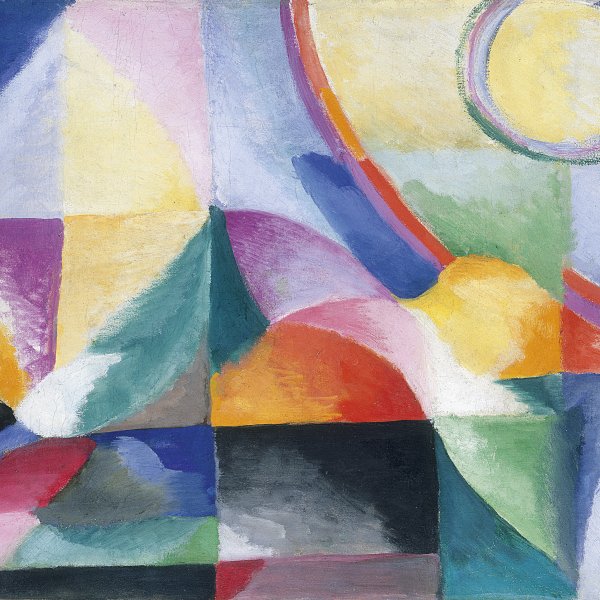The Dancer
1913
Watercolor and pencil on Paper.
65.3 x 53.7 cm
Museo Nacional Thyssen-Bornemisza, Madrid
Inv. no.
472
(1981.17
)
Not on display
Level 2
Permanent Collection
Level 1
Permanent Collection
Level 0
Carmen Thyssen Collection and Temporary exhibition rooms
Level -1
Temporary exhibition rooms, Conference room and EducaThyssen workshop
The British painter David Bomberg, who was born into a family of Polish Jews living in London’s East End, started out as an artist when the most radical avant-garde movements were emerging. He studied at the Slade School and in 1913 travelled to Paris, where he met Picasso and Modigliani. The language of the first paintings executed on his return was characterised by great simplification and ambiguous geometrical images that fluctuated between figuration and abstraction. Depictions based on the new machine age sometimes link him to Vorticism, through he never belonged to this movement.
The theme of dance, which is illustrated in the present painting belonging to the Thyssen-Bornemisza collection, was always of particular interest to Bomberg. The first performances of Diaghilev’s Ballets Russes in London from 1911 onwards, his relationship with keen ballet enthusiast Sonia Cohen, and the fact that his first wife Alice Mayes worked for the Kosslov ballet company no doubt influenced his execution of a series on dance between 1913 and 1915. The present watercolour painted with sinuous lines, possibly one of his earliest on this theme, appears to explore the rhythms of the movement of a ballerina in space and is a significant example of the lyricism of the painter’s early abstract works.
Paloma Alarcó
The theme of dance, which is illustrated in the present painting belonging to the Thyssen-Bornemisza collection, was always of particular interest to Bomberg. The first performances of Diaghilev’s Ballets Russes in London from 1911 onwards, his relationship with keen ballet enthusiast Sonia Cohen, and the fact that his first wife Alice Mayes worked for the Kosslov ballet company no doubt influenced his execution of a series on dance between 1913 and 1915. The present watercolour painted with sinuous lines, possibly one of his earliest on this theme, appears to explore the rhythms of the movement of a ballerina in space and is a significant example of the lyricism of the painter’s early abstract works.
Paloma Alarcó









